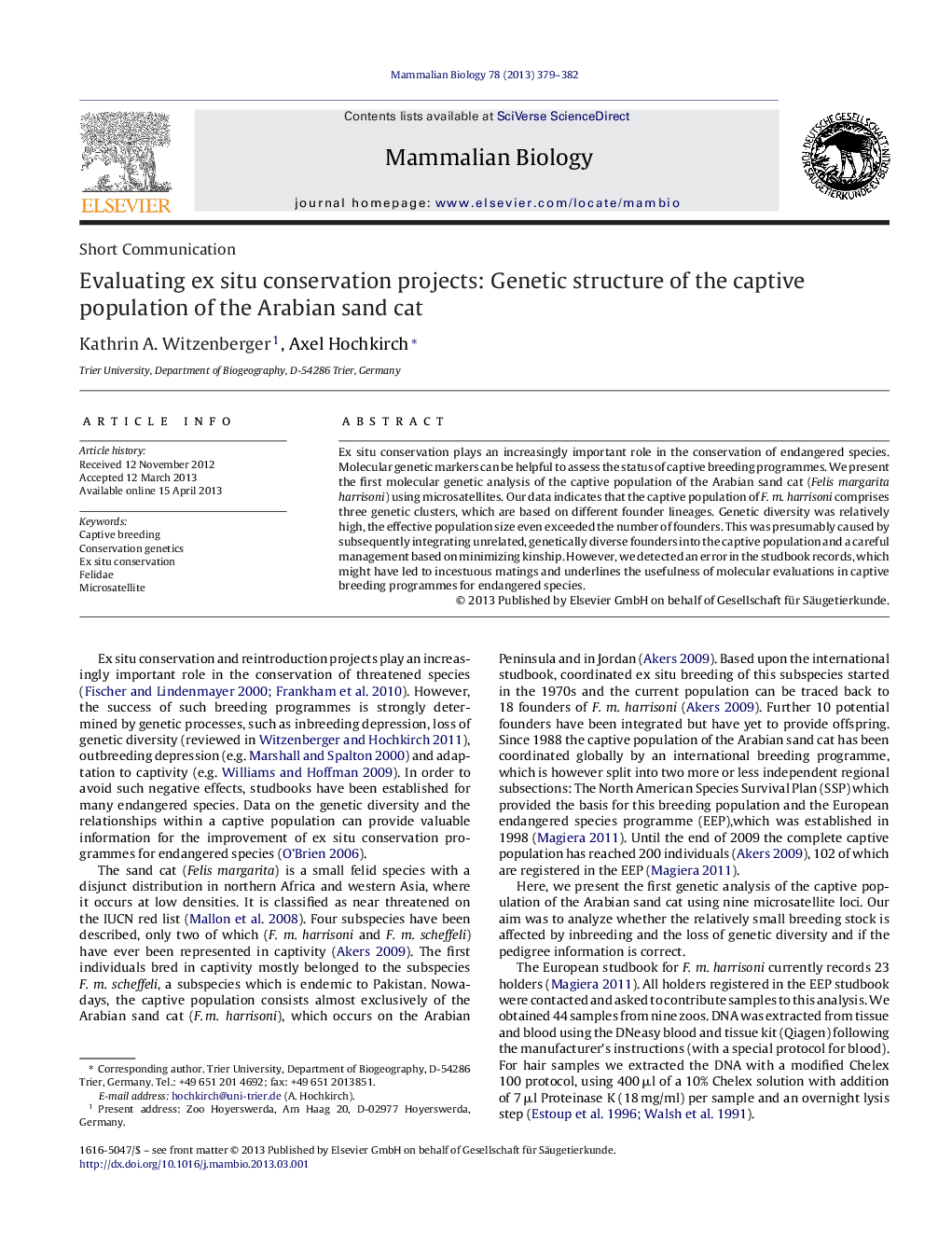| Article ID | Journal | Published Year | Pages | File Type |
|---|---|---|---|---|
| 2193734 | Mammalian Biology - Zeitschrift für Säugetierkunde | 2013 | 4 Pages |
Ex situ conservation plays an increasingly important role in the conservation of endangered species. Molecular genetic markers can be helpful to assess the status of captive breeding programmes. We present the first molecular genetic analysis of the captive population of the Arabian sand cat (Felis margarita harrisoni) using microsatellites. Our data indicates that the captive population of F. m. harrisoni comprises three genetic clusters, which are based on different founder lineages. Genetic diversity was relatively high, the effective population size even exceeded the number of founders. This was presumably caused by subsequently integrating unrelated, genetically diverse founders into the captive population and a careful management based on minimizing kinship. However, we detected an error in the studbook records, which might have led to incestuous matings and underlines the usefulness of molecular evaluations in captive breeding programmes for endangered species.
